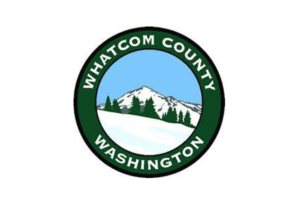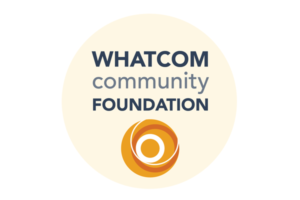After two years working with incredible, diverse and passionate local project teams on dozens of food system assessments, I always get excited when we start a new project. We have no preconceived ideas about the local food landscape or the direction we think a food enterprise model will take – we let the research and data dictate the path.
This approach has led to vastly different recommendations across our studies, sometimes even in counties within the same state. At the same time, even when regions seem to have very little in common, it has been fascinating to see some new, shared trends emerge from the approximately 2,000 individuals nationwide that have participated in our research. This process includes:
- In-depth interviews with agricultural producers, wholesale food buyers, and food systems leaders, and potential infrastructure partners in a region.
- Rigorous surveys of producers and buyers, to assess their interest in a food hub, quantify and characterize their production or purchasing volume, and gather feedback on their preferred features and services from a food hub.
- Site visits to buyers, growers and potential infrastructure partners who are highly committed to building the local food system.
- Community meetings that bring together producers, buyers and others to share ideas and hear in-person guidance on how to best develop a food hub in their region.
Trends in Food Hub Planning
Here is a snapshot of nine themes we see emerging in our work. Perhaps these insights and challenges resonate with your own experiences.
Producers are seeking outlets for surplus and seconds
Recently, research for several studies we’ve conducted showed initial signs that growers are very interested in a food hub. Upon further analysis and discussions with these producers, it became clear that much of their interest was driven by a desire to find a market primarily for their excess, surplus and/or seconds. These producers tend to have thriving on-farm retail operations and/or CSAs. This is in contrast to what we have traditionally seen – producers interested in a food hub so they can expand their production, diversify their sales outlets, transition away from labor intensive farmers market sales, and/or focus on farming while allowing another entity to focus on their sales and distribution.
It would be challenging for a traditional, aggregation / distribution food hub to be developed solely in support of surplus and seconds and still be successful, as wholesale buyers are generally looking for high quality, consistent product available for as much of the year as possible. A food hub that aims to address this goal of finding markets for surplus, excess and seconds may have to be designed very differently. Food hub models might include serving a specific set of less stringent buyers or incorporating processing (either in house or through a partnership) and the development of shelf-stable specialty product lines that utilize surplus and seconds when available and then can be sold throughout the year.
Fear of cannibalization
In some studies, groups of producers emerged that are eager to see a food hub in their region to diversify their sales outlets, reach new and higher volume customers, and enable them to expand their production. However, and most often, the growers most supportive of a food hub are those that have existing wholesale outlets and therefore understand the benefits that wholesale expansion can bring them. These producers often voice a similar concern – “I’m excited for a food hub, but do not want the hub to sell to my existing wholesale customers!” This is a justifiable concern and desire, and in some cases has forced us to refocus our buyer research efforts.
When we kick off our surveys, local teams often target progressive buyers who have stated a commitment to buying local – restaurants, specialty grocery stores, and schools participating in farm-to-institution initiatives. When many growers express fear of food hub cannibalizing their sales, we need to proactively search for buyers that most growers would not be able to serve by themselves, either because the sales process for them would be too long and resource intensive, or because they can’t meet these buyers’ quality, food safety or volume requirements without support. Any emerging food hub in the region would likely have to make specific commitments to growers and buyers about if and how they will support existing relationships that exist between the two.
Access to Labor
Access to labor, particularly field workers and warehouse labor, is becoming a more and more pressing challenge across the supply chain. Many producers and buyers have expressed frustration that available labor is the number one constraint preventing them from expanding their operation. Some have identified policies or undertaken initiatives to better connect them with interns, migrant workers and other labor forces – but none appear to have been rousing successes. The local food supply chain is unique and appreciated largely because it is made up of interconnected, small family businesses. Unfortunately these small farm or warehouse operations are typically unable to invest in the equipment required to mechanize their processes – which is how large farms and warehouses help address this constraint. To date, we haven’t found a great service or strategy to address these labor challenges. We are curious to hear if this is a challenge you are struggling with and any strategies, agencies or initiatives that seem to be successful.
Shifting and flexible definition of local
Buyers, growers and other stakeholders range drastically in how they define “local.” Some are focused on hyper local – products grown within 25 or 50 miles from a point of sale. Some adopt the USDA definition – within 400 miles from a point of sale – which might be better categorized as “regional.” The two most popular definitions of local we’ve seen in our surveys are products produced within 250 miles or within the state. However, more and more, buyers and food hubs are becoming open to thinking about local as a moving target, or “as local as we can get for a product at a given time.”
Part of this new definition of local is the focus on sourcing from farms that represent the spirit of the local food movement – independent family farmers who are committed to growing high quality products as sustainably as possible. This more flexible definition allows a food hub and buyers to stay focused on a core mission and value proposition, while still offering and selling products through a much greater part of the year, and stabilizing cash flow, which is so critical for these infrastructure heavy businesses.
Importance of moving beyond fresh, whole produce
Many operating hubs are primarily focused on the aggregation and sale of fresh, whole produce. While buyers have demonstrated a clear need for this, we are hearing more and more often in our surveys and interviews that buyers are finding it most difficult to source local proteins, eggs, and processed (fresh cut or frozen) produce. When we see this trend in a region that has untapped supply of these products among producers, we get excited about the potential emergence of a food hub that can offer a diversified portfolio of products that provide them with more stable cash flow. However, there are often major barriers to the production and sale of proteins and processed produce.
Often, states lack the processing facilities to effectively serve small-to-mid-sized producers looking to sell wholesale. Many states in which we have worked have a very limited set of certified slaughter and/or meat processing facilities. IQF (individual quick frozen) equipment is virtually impossible to access across most of the country. And investments needed to fill these processing service gaps are tremendously high, and difficult to make without confidence in both throughput and pricing.
Quality, consistency and food safety are more important than pricing
Many buyers have stated that while pricing is important and they have to work within their budget constraints, ultimately high quality local products that adhere to their food safety requirements is more important. If they can find a supplier who can reliably get them consistent, quality, food safe farm products and that is fairly easy to work with, buyers across all categories (restaurants, distributors, schools, hospitals, grocery stores, etc.) are willing to pay a modest to significant premium.
Buyer preference for farm identification over a food hub or regional brand
While many food hubs, states and regions are investing in their own umbrella brands for local farm products, buyers and growers almost always indicate that they care – first and foremost – that a food hub provides transparency and farm identification. Buyers are more interested in knowing and marketing the specific farm from which their product has been sourced, and are often content to let the food hub simply be an intermediary.
We have found that grocery stores, more than other buyer types, express excitement about the potential for an umbrella brand that their consumers can become familiar with and accustomed to buying. Food hubs that are focused on serving these retailers have found their brand development and promotion efforts to be successful.
Certified organic is limited and not extremely important
In the regions we’ve studied, certified organic production is often very limited, representing less than 15% of production among producers we survey. At the same time, buyers do not typically express a strong preference for certified organic, echoing the sentiments of A.C. Gallo, president and CEO of Whole Foods: “Over the last five to seven years…our customers are more interested in buying produce that’s local than organic.” This finding was reiterated by market research recently conducted by The Hartman Group.
Both buyers and growers are, however, often very focused on sustainable production without the certification requirement. Buyers we survey often say that even though certified organic is not critical, uncertified organic and related practices are very important. At the heart of this, we believe, is that consumers (and therefore food hub buyers who sell to these consumers) want their products to be sustainably grown by small farmers who care deeply about the environment and the health and wellness of the mouths they feed. When they read “local,” and see a picture of the farmer who grew their product, they can be confident that these desires are being met – with or without an organic certification.
Distribution is often a critical lynchpin, making technology-only solutions challenging
At the start of several recent projects, the local project teams had a hypothesis that the region was most in need of an online marketplace to better connect growers and buyers. However, in all of these studies, we have found that growers in the region have little to no distribution infrastructure and often also had limited cooling and cold storage capacity. These major limitations suggest that an online marketplace alone would not be successful, as it would not address the infrastructure and capability gaps among producers. In these cases, often the region is most in need of more traditional aggregation / distribution types of hubs, or would need an online marketplace only if it also engaged and managed third party logistics providers to pick up and deliver goods.
Other Trends in Food Hub Planning
This is by no means an exhaustive list of all we’re seeing. We also know that there are things happening in food hub planning that we haven’t seen yet. Planning efforts and field research uncover relevant and sometimes unexpected insights and considerations for teams working to get a food hub off the ground. That said, those of you who are on the ground, working to run your local food hub or to support them in other ways likely have unique and invaluable perspectives to share. If so, we would love to hear from you!


